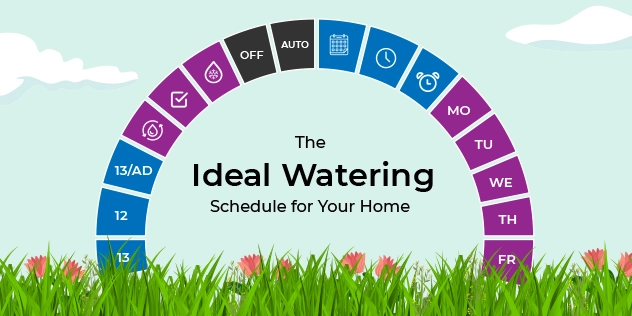
Last Updated November 30, 2023
For a lush, healthy lawn, a regular watering schedule is an essential part of the equation. However, knowing when you should water your lawn, how much water your lawn needs, and how frequently to water it are all critical questions. Here's what you need to know to create the best lawn watering schedule for your home.
Table of Contents:
How Much Should You Water Your Lawn and Plants?
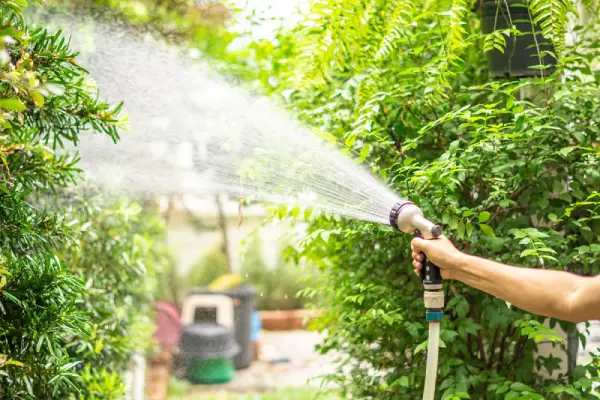
Most lawns need about an inch of water per week, but this amount can vary depending on which region of the country you live in, wind speed, evaporation rate, and what type of grass you are growing. Cool-season grasses like tall fescues can tolerate drought, and others like bluegrass, ryegrass, and fine fescues will go dormant during a drought
Warm-season grasses like Zoysia or Bermuda and some native varieties like Buffalo grass in the south are also drought tolerant and tend to require a bit less water than cool-season grasses in some parts of the country.
If your lawn is browning, or if you walk across the lawn and your footprints don't disappear relatively quickly, you probably need a bit more than the recommended one inch. Signs of overwatering include a dense thatch layer on the soil surface, fungi growth, excess weeds, visible standing water, bare spots in the soil, or a spongy feel to the soil when walking.
If your grass has thatch buildup or you aren’t sure about the amount of care it needs, consult with a professional. An expert will conduct a thorough inspection, offer advice, and provide dethatching or core aeration services as needed. Keep reading for more helpful DIY lawn watering practices.
When Should You Water Your Lawn and Plants?
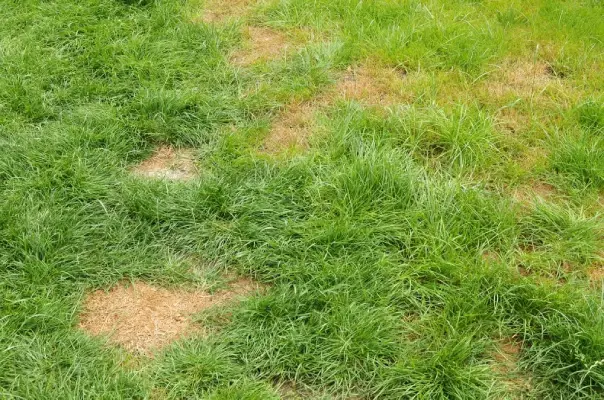
There’s no doubt that plants and lawns look their best when they’re properly hydrated. But how do we know when it’s time to water? Fortunately, your lawn and plants will show signs that they need water. For example, if your grass has a brown, grayish, or dull green look and your outdoor plants are drooping and dropping leaves, it’s time to hydrate them. Of course, heeding the signs is just one step. You’ll want to consider the best watering schedule for grass and plants to prevent overwatering and diseases.
The best watering time for your lawn is early in the morning, before 10:00 a.m. Hot, sunny afternoons are not ideal watering times for lawns, as the water may evaporate before the grass can absorb what it needs. Watering overnight could lead to problems with disease. Always do a spring checkup of the entire sprinkler system for any damaged pipes or irrigation heads prior to activating your system for the growing season. If you are unfamiliar with your sprinkler system and how to prep it for spring, please consult with a professional.
How Often and for How Long Should You Water Your Lawn and Plants?
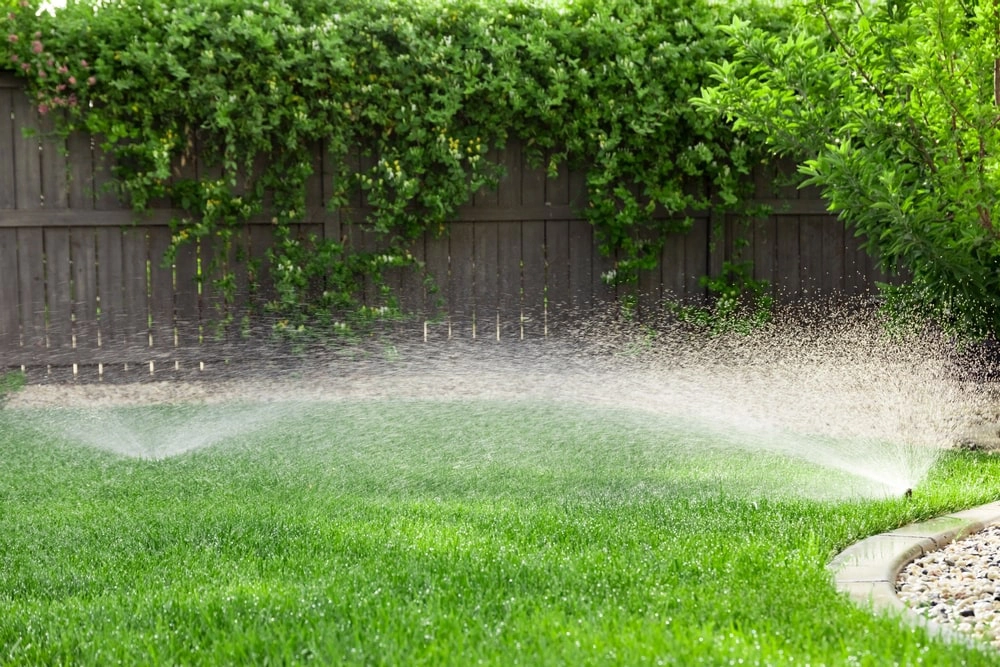
Although sprinkler systems make it easy to water daily, most lawns will not require this much water. Rather than short, light watering, create a schedule for less frequent, deep watering sessions. Knowing how long to leave the sprinkler on depends on the flow pattern or rate of hydration that your system delivers, wind speed, and evaporation rates.
This information should be available from the manufacturer, or you can leave a few empty tuna fish or cat food containers on the lawn the next time you water and see how long it takes to fill with an inch of water. In addition, it’s important to ensure all parts of your lawn and landscaping are receiving adequate hydration. Water distribution might not be even across your lawn, so be sure to use several containers and determine the average amount of time it takes to fill them all.
As for how long to leave the sprinklers on, it varies. However, the average time to water lawns so that they are properly hydrated is 60 minutes per week. So, turning on your sprinkler for 30 minutes twice per week is a good starting point for creating your own custom schedule. To make sure you've watered enough, check the soil every 15 minutes, and stop once the ground has been moistened to a depth of six inches.
Another test to check the range of the sprinkler system is placing regular baking flour lightly on the lawn, and after the irrigation system runs a complete cycle, check for any spots with flour still showing. Leftover flour indicates the need for a sprinkler head adjustment due to limited range or clogging, a radius shift in the nozzle, or an incorrect flow pattern may be the problem.
How to Create an Ideal Watering Schedule for Your Home
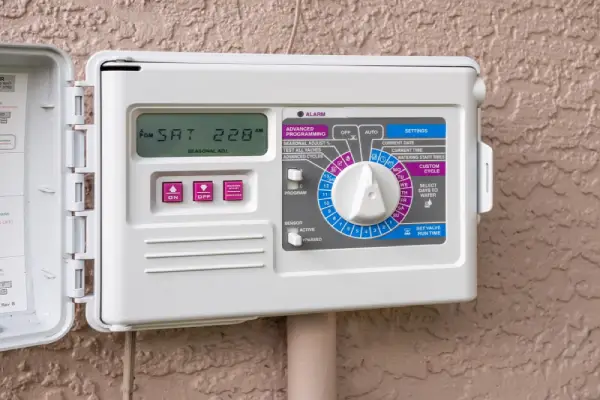
You can create a simple watering schedule to keep your grass and plants healthy by giving them the right amount of water throughout the seasons. Remember that weather plays a significant role in helping you create the best lawn watering schedule. One of the most important factors to consider is the length of the day, which is why your plants and grass need much less water during fall than in the summer. Be sure to make any necessary adjustments to your sprinkler system based on daily weather and site conditions. The amount of direct sunlight and shade your lawn and plants receive each day will also impact the amount of hydration they need on a weekly basis.
Finding the right amount of water and the perfect frequency might take some trial and error, but it's worth the effort. A well-watered lawn will be green, lush, and soft underfoot while also being the envy of the neighborhood!
Tips for Water Conservation

Water is a precious resource, no matter which part of the country you’re in. The good news is that we can get in the habit of making small changes to conserve water, and it’s easier than you think. Best of all, you can conserve outdoor water use and still have a beautiful landscape all year long.
The following tips can help you conserve water for outdoor use, without sacrificing the healthy and beauty of your lawn:
- Water your grass and landscape plants earlier in the day when outdoor temperatures are cooler.
- Get in the habit of using a broom to clean driveways, patios, and sidewalks instead of a water hose.
- Use less fertilizer during drought conditions.
- Aerate your lawn.
- After mowing, leave the grass clippings (they help the soil retain moisture and return nutrients to your grass).
- Divide watering times into shorter sessions.
- Use mulch or compost (it helps retain moisture).
- Consider adding attractive hardscape options to your landscape.
- Inspect your sprinkler system often and repair broken sprinklers to reduce water waste, which will help conserve water and save you money
Need Help Watering Your Home's Landscape? Contact The Grounds Guys.
If you're not sure of the best way to water your lawn or need help coming up with the best lawn watering schedule, contact The Grounds Guys. One of our local experts will evaluate your property and provide a free estimate for the service that will be the most efficient and effective for your lawn. Your local lawn care and landscape pros will help you have the best-looking lawn and landscape on the block. We have locations throughout North America. Plus, all our work is backed by the Neighborly Done Right Promise™, so you can rest assured that we'll provide outstanding service and do the job right the first time.